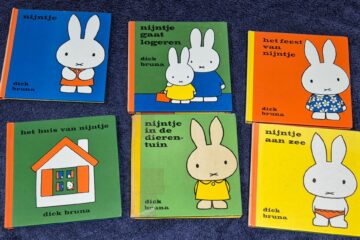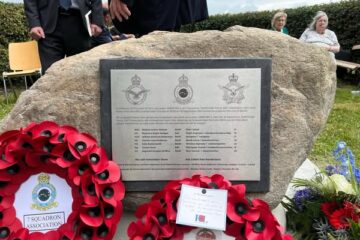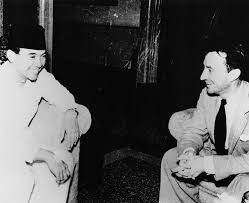Soon after the liberation of the southern Netherlands, on 14 September 1944, the Dutch Queen Wilhelmina decreed from London the official formation of a NEI government-in-Exile. This replaced the Netherlands East Indies Commission for Australia and New Zealand (NEICANZ) as it was established in 1942 in essence not much changed structurally and the renamed entity remained led by Acting Governor-General of the Netherlands East Indies Huib Van Mook. This time however, he was allowed to return from London to Camp Columbia in Brisbane where the NEI Government-in-Exile had its offices and accommodation facilities.
Documents relating to the Establishment of NEI Government in Australia.
Researchedby Ruby Todorovski, researcher at the University of Queensland.
The main difference was that from now on they would be under the direct control of the Dutch Government who wanted a rapid recolonialisation. The Netherlands Military Administration now kept a tight rein on colonial officials such as Van Mook and Van der Plas, who were as we already discussed more open to a dialogue with the ‘Indonesians’ and were willing to look at different governance structures for the colony after the war. This differed from the official Dutch hardliner on the issue.
Proposed Establishment of NEI Government in Australia, Van Aerssen Beyeren, letter to Evatt, 3 November 1944

The NEI Government-in-Exile consisted of seven departments, whose directors would, along with Van Mook, constitute a legislative council.
- Van der Plas, as Director of the Department of the Interior and Chairman of the Board of Departmental Heads
- Dr N.S. Blom as Director of the Justice Department
- Dr R.E. Smits as Director of the Finance Department
- A. Kerstens as Director of the Education Department
- H.W. Sitsen as Director of the Public Works Department
- Van Oyen as Head of the Department of War
- Van Hoogstraten as Director of the Economic Affairs Department and the acting General Secretary of the Government
Note that no Indonesians were part of this Government.
Van der Plas, Blom, Sitsen and Van Oyen had escaped with Van Mook in March 1942, while Van Hoogstraten and Smits had served on the NEI Commission at its inception. Kerstens was a former Dutch Minister for Trade, who while in the Netherlands had been appointed temporary Commissioner for NEI Affairs and then sent out in October 1944, to consult with the NEI Administration.
The directors held their first meeting in Melbourne on 23 May 1944. They had nine more meetings before reconvening at Camp Columbia on 23 August.
Because of differences in political opinion between the Dutch Government and the NEI Government, there were sometimes conflicting messages send to the Australian Government from the Dutch Ambassador in Canberra, toeing the hard line, and the more liberal thinking NEI-government-in-exile.
In March 1946 most of the officials and their offices had left Brisbane for the NEI and as such the NEI-Government-in-exile no longer existed.
Sea also:
Camp Columbia at Wacol – Dutch preparing for re-colonialisation
Links to other declassified WWII Australian Documents re the Netherlands East Indies


